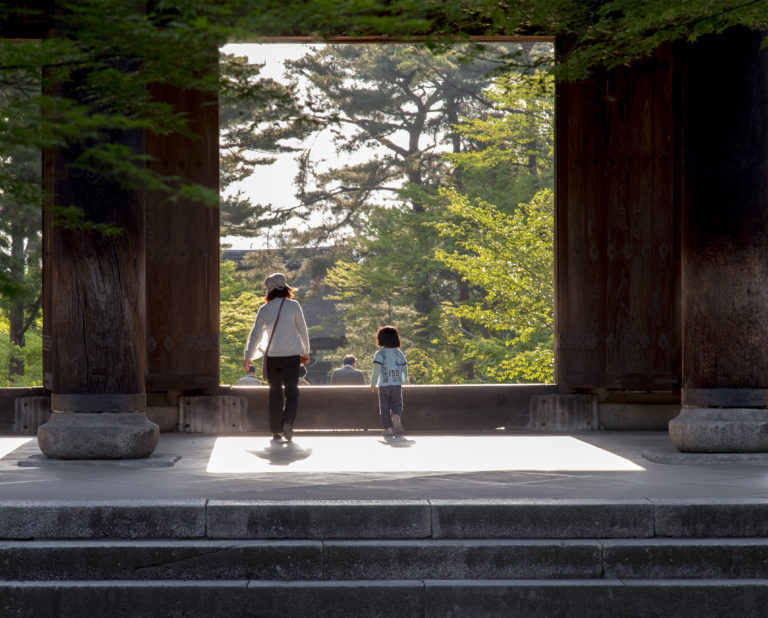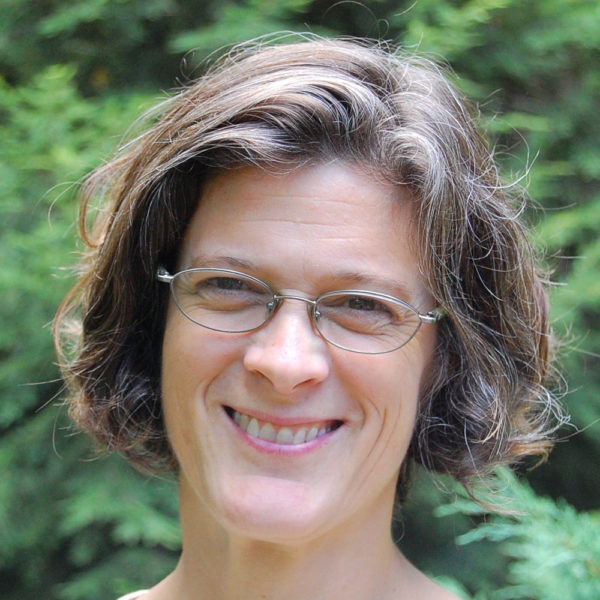
Image by Sky Carp/Flickr, Some Rights Reserved.
Letting Go Is Seeing Farther
I pressed the cell phone to my ear, even though I knew that would do little to improve the overseas connection.
“It was cholera,” my daughter Nina said.
“Cholera?” I repeated, hoping I hadn’t heard right.
“I’m fine now, Mommyo,” she said unfazed, her voice reassuringly warm as she described the lime/salt concoction the hospital staff had given her, the standard treatment for an all-too-common affliction suffered by many in Cameroon, the host country for most of my daughter’s sophomore year in college.
In spite of that setback, Nina loved Cameroon. She picked up the language quickly and surprised cabbies by bargaining down fares and singing along with the radio. During her first month in the African nation, her college class had taken a trip to the northernmost part of the country where they visited an old man who told fortunes.
He would put certain tiles into a basket that was filled with water and sand, place some crabs inside, and then put the lid on. While the crabs were busy in the basket, the visitor would be invited to ask three questions, after which the Crab Man would open the lid, remove the crabs, and read whatever message they had left in the form of rearranged tiles. My daughter had been enchanted by him and was delighted with the answers he had given her.
The summer before Nina left for Cameroon, friends had asked me, “Aren’t you worried about her being so far away?” No, I told them. I didn’t worry. Not about that.
When Nina was five years old, she started school in small-town Montana, where we had decided to put down our roots. I felt anonymous growing up in D.C., and both my husband and I longed for the mountains and the wilderness. We imagined that a small community would enfold us in its warm and familiar embrace.
But it didn’t work out that way.
When Nina stepped off the bus after school each day, she dragged her feet down the driveway, all the dance in her step gone. The school counselor said, “I know it’s bad for Nina. I’ve seen it myself, but there’s very little I can do to stop it.”
The experts who wrote books about bullying — I read every one I could find &mash; were no more helpful. “Don’t let the bully see that they can upset you,” they said, hollow advice that I repeated to my little girl as she sat behind me in the back seat in a green turtleneck and denim jumper that buttoned over one shoulder, her small hands still dimpled over the knuckles.
I didn’t know what else to tell her. Nothing else had worked.
“There is no bullying in my school,” the principal informed me just weeks before three girls attacked Nina on the playground, knocking her down, hitting and kicking, while the rest of the children watched. A week after we removed Nina and took her out to a homeschool to heal, two mothers approached me at different times, each one pulling me aside and speaking in a low, confidential voice. “It’s a good thing you took Nina out,” both of them said. “It’s been so hard to watch her suffer.”
I wondered if these mothers felt absolved by telling me these things. They knew, and they did nothing. These mothers were the hardest to forgive, nearly as hard as forgiving myself. It is our job to protect children, if nothing else: all of the children, our own most of all. And in that, I had failed.
We no longer live in Montana. My memory of that time has always been weighted with guilt and with fear. How can my daughter live with those wounds? How can I?
And then, back on the phone with Nina just weeks before she returned from Cameroon, we were both remarking on how unpredictable life could be, how we would never have guessed back when she was a little girl growing up in rural Montana and using pancake scraps to train her chickens to do pirouettes that she would end up in Cameroon, teaching dance, surviving cholera, attending dowry celebrations, and frying plantains.
“Who would have thought I would end up here?” my daughter said to me over the crackling phone. “You know, Mom, I have decided to think of my life in terms of trajectory instead of plans. It just makes more sense.”
We would all be wise to consider her comment, and parents more so than anyone else. Plans tend to focus on the outcome or destination. Success or failure often depends on reaching a specific goal. Trajectory has much more to do with the start than the finish. There may be a direction or aim in mind, but with trajectory our attention is concentrated on constructing a solid platform from which to launch our dreams — or our children.
Trajectory feels riskier than plans: once we release our children, they are out of our hands and we have that heart-pounding opportunity to watch as the wind and the tide exert their influence. But I suspect that this is what we parents should be all about. We lay the groundwork; we build a foundation of love and trust, of respect and responsibility; we build it as solidly as we can so that the jump, when it comes, is clean and clear and steady, and most of all, is theirs.
The Crab Man spoke to my daughter of many things that day when she visited him. Coincidentally or not, his predictions had mirrored her aspirations. The crabs or the tiles indicated to him that she would complete a “work” and then embark on another that would take her around the globe, and that she would also return to Cameroon (something she has since done).
Did the crabs have special powers? I’m not all that familiar with crabs, so I can’t say. But what about the Crab Man? Was he prescient? A con artist? Or did he just see how comfortable my daughter was in his village?
He spoke his own local dialect and had another villager translating his words into French. Nina was fluent enough to be able to then translate the translator’s words for the other students. Did the Crab Man take note of this, of how carefully she tried to convey the words both ways? Did he notice how she spoke with respect and listened with concentration? Did he see the shadows and the intelligence in her eyes when she was playing with the little children and the baby goats that ran around the hut?
I’m betting that he did, that he was a master of reading not just crabs and tiles, but trajectory. I suspect that the Crab Man wasn’t predicting so much as he was just stating the obvious, at least what would be obvious to those who know to look at what is in order to catch a glimpse of what will be.
I’m learning that to let go — of a cherished child who has grown into adulthood, of a dream that you have held onto your whole life, of a story that you have repeated to yourself every night as you struggle to fall sleep, of pain, even. Letting go of these things does not actually mean that you open your hand and let them drop away. You aren’t getting rid of them or losing them or burying them. You aren’t even releasing them, although it can feel that way.
Letting go is more a process of seeing differently than you have before. Of seeing farther. And wider. It is making room beside your old habitual perceptions, beliefs, and experiences, the ones that may — or may not — have served. But in any case, they no longer comprise the entirety of what you can imagine. Your horizon is larger than that. There is room for more.
It takes courage to simply look, not for what might have been or what will be, but at the truth — and the beauty — of what is.
Finally able to look past my guilt and fear to see — or at least hear — the young woman who she had become, I said to Nina, “Yes, my Sweet Pea. Trajectory. That makes all the sense in the world.”


Share your reflection